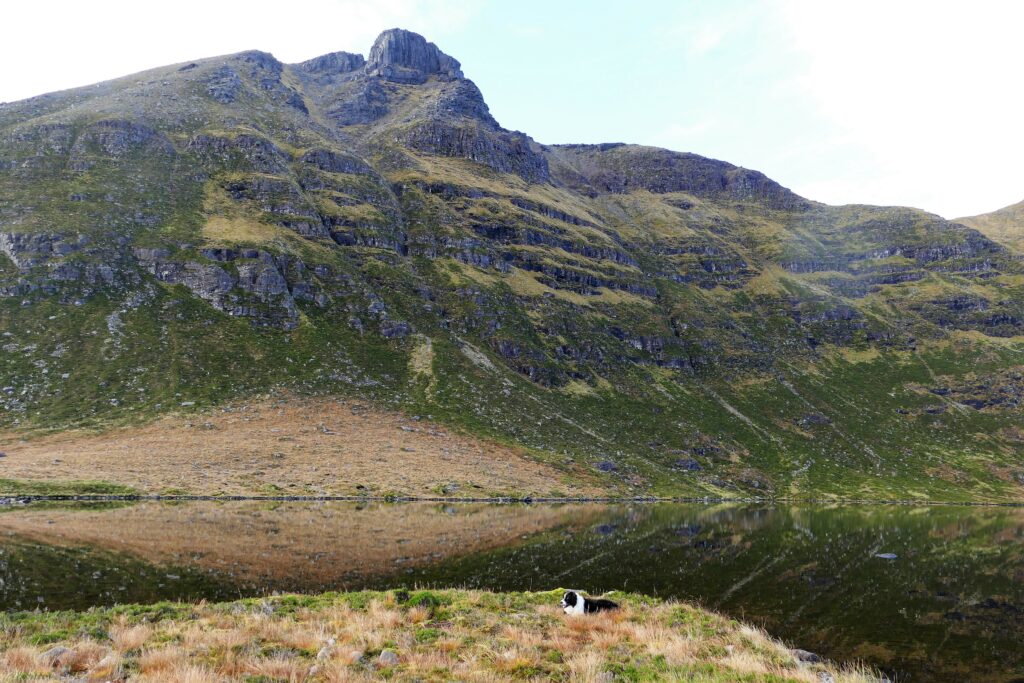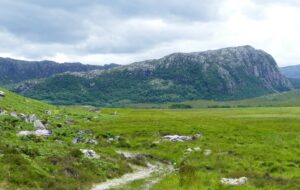2022 County Report for West Sutherland
Ian M. Evans and Gwen Richards
Fieldwork during 2022 focussed on two areas. In Assynt, 21 monads on the John Muir Trust’s 3699ha Quinag estate generated 2200 records. For illustrated accounts of these visits see www.assyntwildlife.org.uk (under Quinag Wildlife Project).
Of particular interest were narrow bands of grassland and marshland along the 52km of watercourses on the hill, which have been overlooked in NVC and other surveys. Burns running off nearby limestone, for example, yielded two new sites for Carex paniculata (Greater Tussock-sedge), which is rare in North-West Scotland.
Fissured Torridonian sandstones at the edge of Loch Assynt produced Melica nutans (Mountain Melick) and base-rich stony flushes elsewhere on these rocks, marked by tussocks of Schoenus nigricans (Black Bog-rush), had Eriophorum latifolium (Broad-leaved Cottongrass), Pinguicula lusitanica (Pale Butterwort) and a variety of orchids.
We had two productive weeks in June and August on the north coast at Tongue, with Gordon Rothero and Ro Scott. These yielded some 2500 records from 23 monads.
We have started exploring wooded crags and gorges around Strabeg, at the southern end of Loch Eriboll (NC3951). Although mainly Lewisian gneiss, they have slivers of base-rich Cambrian Fucoid Beds, accounting for species such as Carex capillaris (Hair Sedge), Galium sterneri (Limestone Bedstraw) and Silene acaulis (Moss Campion). There are also massive old examples of Corylus avellana (Hazel) in the woods. There is much more to do in this area.
New to the vice-county were Crassula tillaea (Mossy Stonecrop) at Dalvraid (NC5663) and Sisyrinchium californicum (Yellow-eyed-grass) at Inverkirkaig (NC0719).

